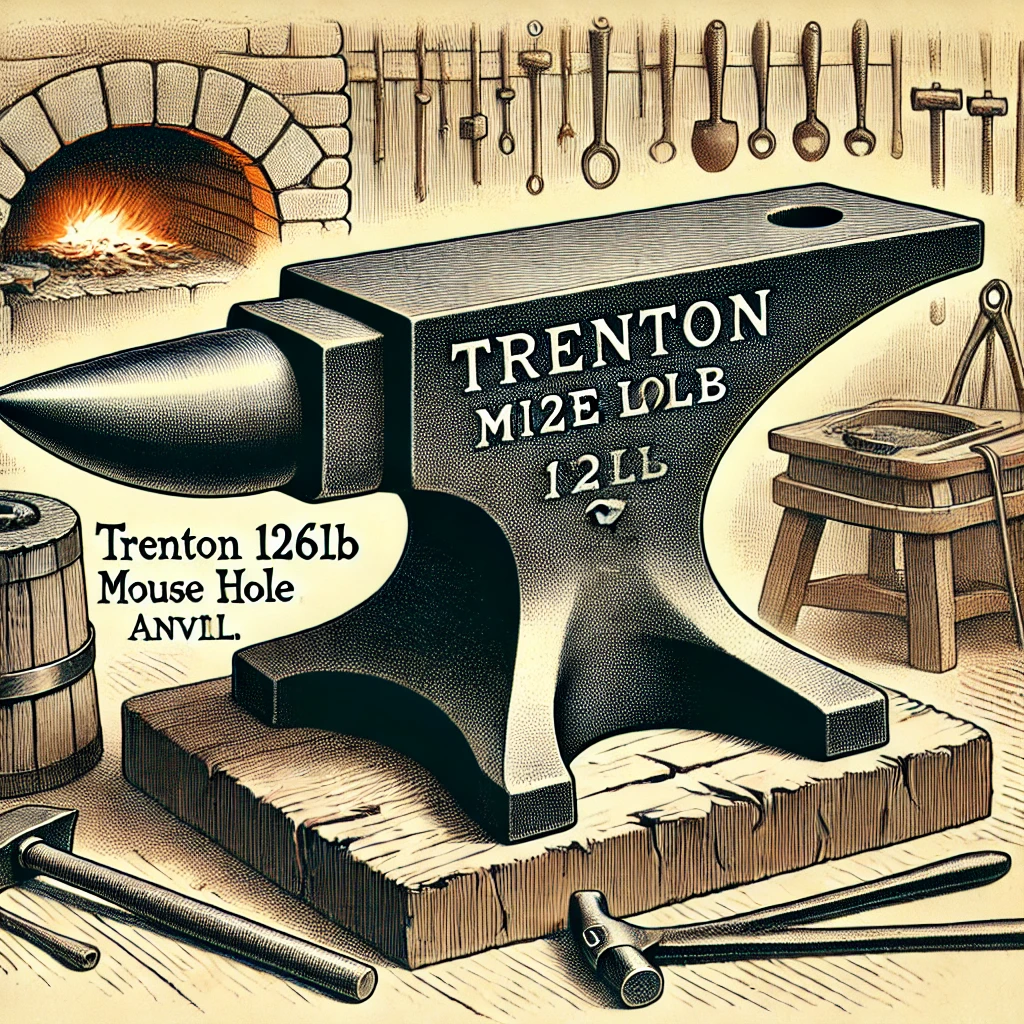Trenton 126lb Mouse Hole Anvil Identification: A Gateway to Historical Craftsmanship
Introduction to trenton 126lb mouse hole anvil identification
The trenton 126lb mouse hole anvil identification stands as a monumental testament to the rich history and enduring craftsmanship of traditional blog metalworking. Originating from a time of meticulous craftsmanship, the Trenton 126lb Mouse Hole anvil not only met the practical needs of blacksmiths but also stood as a pinnacle of engineering in its era. This introduction delves into the origins and the exceptional qualities that define these historical artifacts, setting the stage for a deeper exploration of their significance.
Deciphering the Trenton 126lb Mouse Hole Anvil
The Trenton 126lb Mouse Hole anvil is not just a tool; it embodies a legacy wrapped in iron and steel. Each anvil carries unique features that make it distinguishable from its contemporaries:
The Mouse Hole Signature: Located typically near the base, this feature is pivotal for specific blacksmithing techniques and distinguishes it from other anvils.
Robust Composition: Crafted to withstand the rigorous demands of metal shaping, the material composition speaks volumes about the technological advancements of the time.
Historical Marks: Inscriptions and stamps on the anvil surface tell the story of its origins, manufacturer, and sometimes even the hands it has passed through.
Anatomy of the Trenton 126lb Anvil
The Signature Mouse Hole
The defining feature of the Trenton Mouse Hole anvil is its distinctive pritchel hole, often referred to as the “mouse hole”. This small, round hole is pivotal for metalworking tasks requiring precision.
Dimensions of Durability: Weighing 126 Pounds
The 126-pound weight of this anvil ensures stability and resistance against the heavy strikes of blacksmithing, making it an ideal tool for forging.
Markings of Authenticity
Each Trenton anvil is adorned with specific branding marks that signify its authenticity and origin. These marks are crucial for identification and provide a trace of its manufacturing lineage.
Form and Functionality
Each Trenton anvil features specific branding marks that signify its authenticity and origin.
Evaluating Material Resilience
Designers shaped the anvil with symmetry and balance to provide a stable work surface, and they chose materials that ensure longevity and wear resistance.
Guidelines for Identifying a Genuine Trenton 126lb Mouse Hole Anvil
The Hunt for the Mouse Hole
The first step in authentication is to locate the mouse hole pritchel, a unique feature in these anvils.
Weight and Brand Stamps
Look for the weight stamp on the side or bottom of the anvil. Trenton anvils also have distinct branding stamps that can help verify their authenticity.
Scrutinizing Shape and Craftsmanship
The overall shape, design, and finish of the anvil can indicate its age and origin. Uneven surfaces and asymmetry might suggest modifications or wear.
Assessing Wear and Artisanal Marks
Evaluate the anvil’s surface and body for signs of wear and historical craftsmanship marks, which add to its story and value.
The Collectible Value of Trenton 126lb Mouse Hole Anvils
Owning a Trenton 126lb Mouse Hole anvil is not just about possessing a tool; it’s about holding a piece of history. The value of these anvils goes beyond their practical use, encompassing their heritage, rarity, and the craftsmanship they represent.
Practical Tips for Trenton Anvil Collectors
Collecting Trenton Mouse Hole anvils can be as rewarding as it is challenging. Here are some essential tips for enthusiasts:
Attending Auctions and Estate Sales: Often, the best finds come from auctions and estate sales where old tools are given new homes.
Verification of Authenticity: Learn to identify genuine marks from replicas. Authentic anvils have specific stamps and wear marks that replicas often cannot perfectly mimic.
Preservation Techniques: Proper care and maintenance are crucial to preserving the anvil’s historical value and functionality. Use appropriate rust prevention and storage techniques.
Networking with Experts: Connect with other collectors and blacksmithing historians to gain deeper insights and locate rare pieces.
Conclusion
The exploration of the Trenton 126lb Mouse Hole anvil is more than a study of a tool; it’s a journey through history and craftsmanship. Each anvil not only tells the story of its creation but also embodies the legacy of an era where craftsmanship was paramount. For collectors and enthusiasts, each piece is a treasure trove of stories, waiting to be preserved and passed on to future generations. By understanding and appreciating these relics, we keep the flame of historical craftsmanship alive.
FAQS
1.What distinguishes the Trenton 126lb Mouse Hole anvil?
Its unique “mouse hole” pritchel and historical craftsmanship.
2.How can you verify the authenticity of a Trenton 126lb anvil?
Check for weight stamps and specific branding marks on the anvil.
3.Why is the Trenton 126lb anvil highly valued among collectors?
Due to its rarity, historical significance, and enduring utility.
4.What materials are used in the making of Trenton anvils?
High-grade steel hardened to resist heavy metalworking demands.
5.How does the weight of the Trenton 126lb anvil impact its functionality?
The 126-pound weight provides stability and resistance against heavy forging tasks.






Post Comment